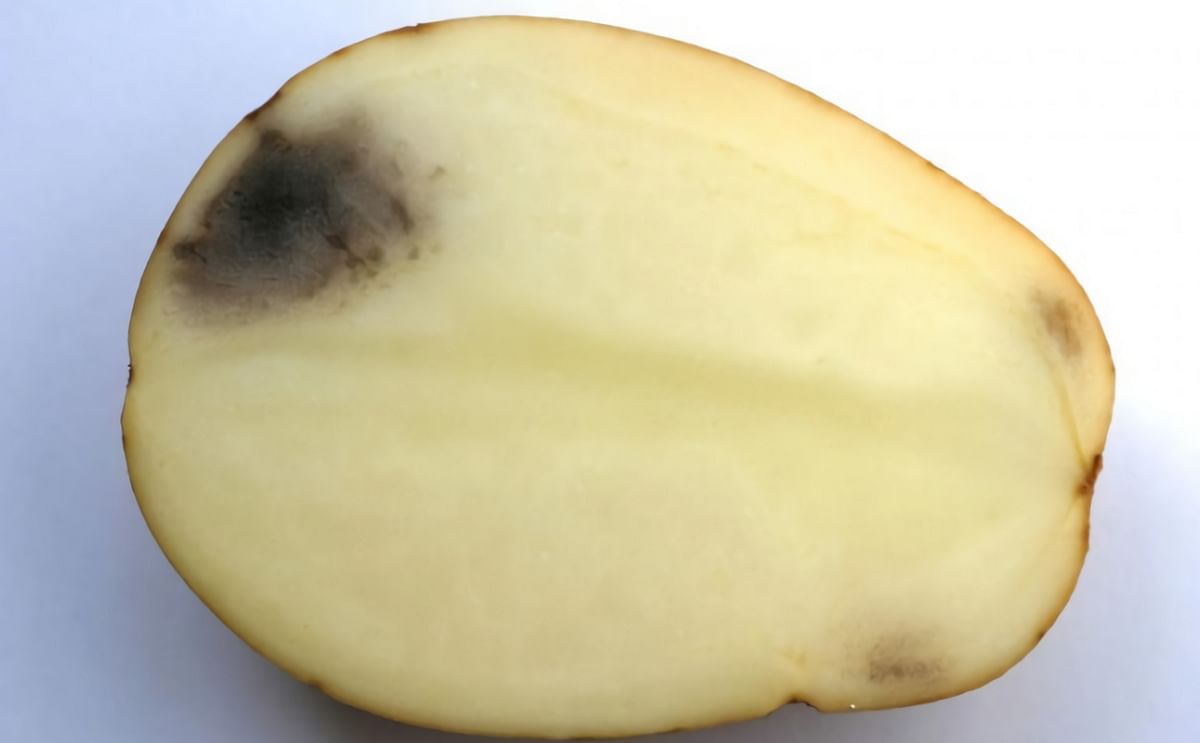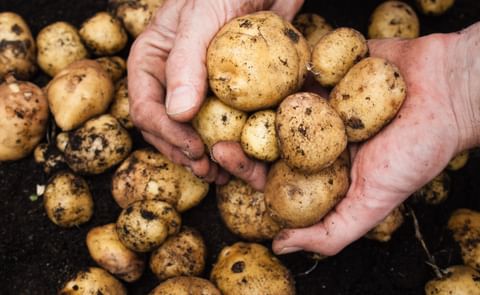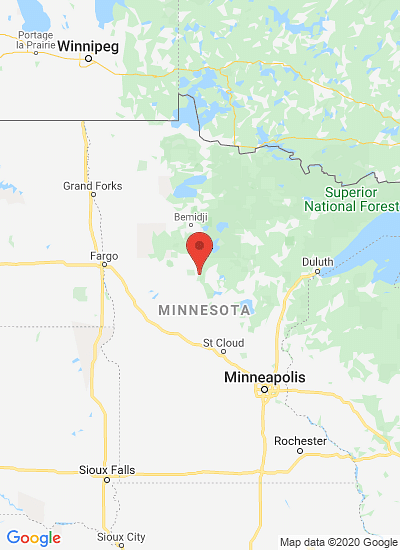A bruised potato. The discoloration that occurs after tissue damage is largely caused by the activity of the enzyme polyphenoloxidase (PPO). In the Calyxt PPO_KO potato variety (one of the) genes coding for the PPO enzyme is knocked out, making the variety less susceptible to (the visible effects of) bruising. Image courtesy of AHDB Potatoes/Sutton Bridge CSR
USDA clears Calyxt potato modified to withstand bruising

A new potato variety that’s genetically modified to withstand bruising has been cleared for commercialization without undergoing USDA’s deregulatory process for biotech crops.
The agency has advised the potato’s developer, Calyxt, the cultivar is not a “regulated article” under federal law because it doesn’t contain genes from plant pests.
Because most commercial biotech crops incorporate genes from plant pests, they were subject to environmental analysis and a risk assessment from USDA before they were deregulated.
In the case of Calyxt’s “PPO_KO” potato, the variety was created through the “knockout” of an unwanted gene that causes bruising without leaving plant pest genes in the crop.
The cultivar will reduce browning in fresh potatoes as well as bruising “to minimize crop rejection and waste in processing lines,” said Federico Tripodi, Calyxt’s CEO, in an email. Up to 5 percent of fries and chips are rejected because of discoloration, he said.
With the USDA’s recent approval, the company plans to work with “third party researchers” to plant the variety in U.S. fields, he said.
Read More:
Calyxt inquiry to USDA/APHIS re status Calyxt PPO_KO potatoUSDA/APHIS response re status Calyxt PPO_KO potato
The PPO_KO variety is the second genetically modified potato developed by Calyxt that USDA has cleared for commercialization without undergoing the deregulatory process. An earlier variety, which inactivates a gene associated with the cancer-causing compound acrylamide, was approved in 2014 and is currently in field trials.
The J.R. Simplot Co. has obtained USDA approval for potatoes with similar traits in recent years, but these were initially regulated as possible plant pests by the agency.







